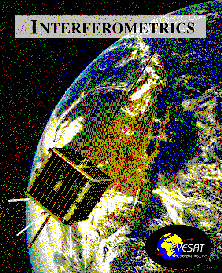 AMRAD-OSCAR
27
AMRAD-OSCAR
27 Satellite
Summary
Satellite
SummaryUplink:
 Description
DescriptionAO-27 is a secondary amateur communications payload carried aboard the EYESAT-1 experimental MICROSAT satellite built by Interferometrics Inc. of Chantilly, Virginia. The commercial side of the spacecraft's mission is the experimental monitoring of mobile industrial equipment.
The amateur equipment aboard the satellite was constructed by members of AMRAD, a technically oriented, non-profit organization of radio amateurs based in the Virginia suburbs of Washington, D.C., to meet the needs of amateurs for a platform to conduct digital satellite communications experiments.
AO-27 is an "FM Repeater" in space. It essentially consists of a crystal controlled FM receiver operation at 145.850 MHz and a crystal controlled FM transmitter operating at approximately 436.795 MHz. Output power of the transmitter can be set to over 1 watt (rarely used), 0.5 watts (normal operation), or under 0.1 watts (exciter only). The uplink antenna is the linear polarized whip on the top face of the spacecraft and is shared with the commercial payload's receivers. The downlink antenna is a 1/4 wave whip mounted on the bottom face of the spacecraft. Polarization is nominally linear, the rotation and revolution of the spacecraft and propagation effects will cause the actual signal polarization at a ground station to vary widely during a pass.
Because of the satellite's limited power budget and a desire to maintain sufficient battery capacity for as many years as possible, the amateur transmitter on AO-27 is on for only part of the daylight portion of each orbit. As of September 1998, the satellite passed its five year design goal with minimal signs of battery degradation, so this operating philosophy appears to have been successful.
AO-27 is available on daylight passes over the Northern Hemisphere. The "TEPR" States describe the amount of time (in minutes) when the spacecraft enters and leaves sunlight. TEPR numbers are adjusted every few months to account for the seasonal North/South movement of the latitudes where AO-27 enters and exits sunlight. Chuck Wyrick, N1UC (formerly KM4NZ), provides an Explanation of TEPR States. Most tracking programs will provide a reading or display the necessary info to predict if AO-27 will be "on" during a pass.
More information on AO-27's schedule and operation courtesy of Michael Wyrick, N4USI, the control operator of AO-27 and Steve Greene, KA1LM.
[Special thanks to Stephan Greene, KA1LM, for assisting in the above information -- N7HPR]
 References
References
Last update May 31, 2003 - N7HPR